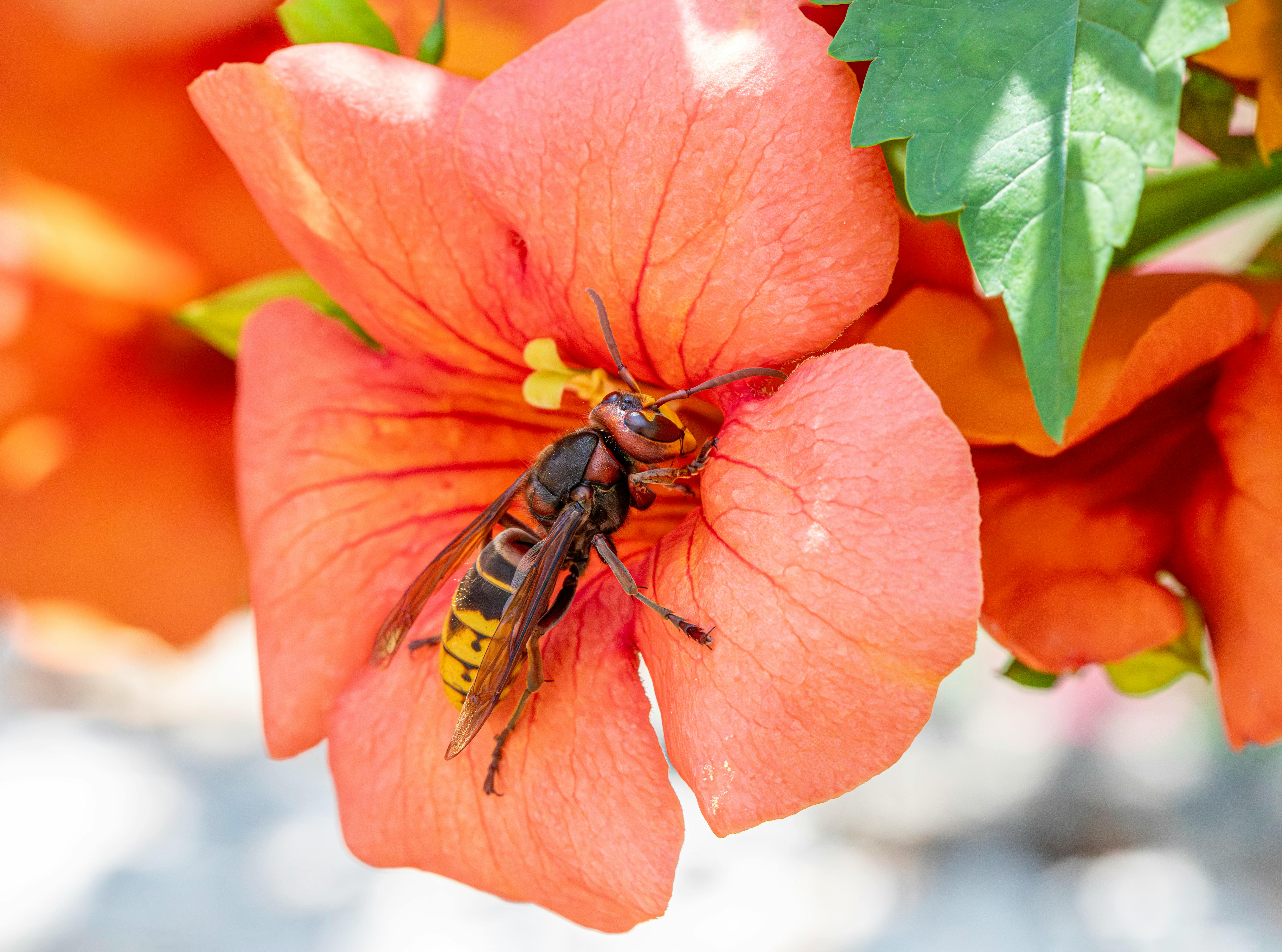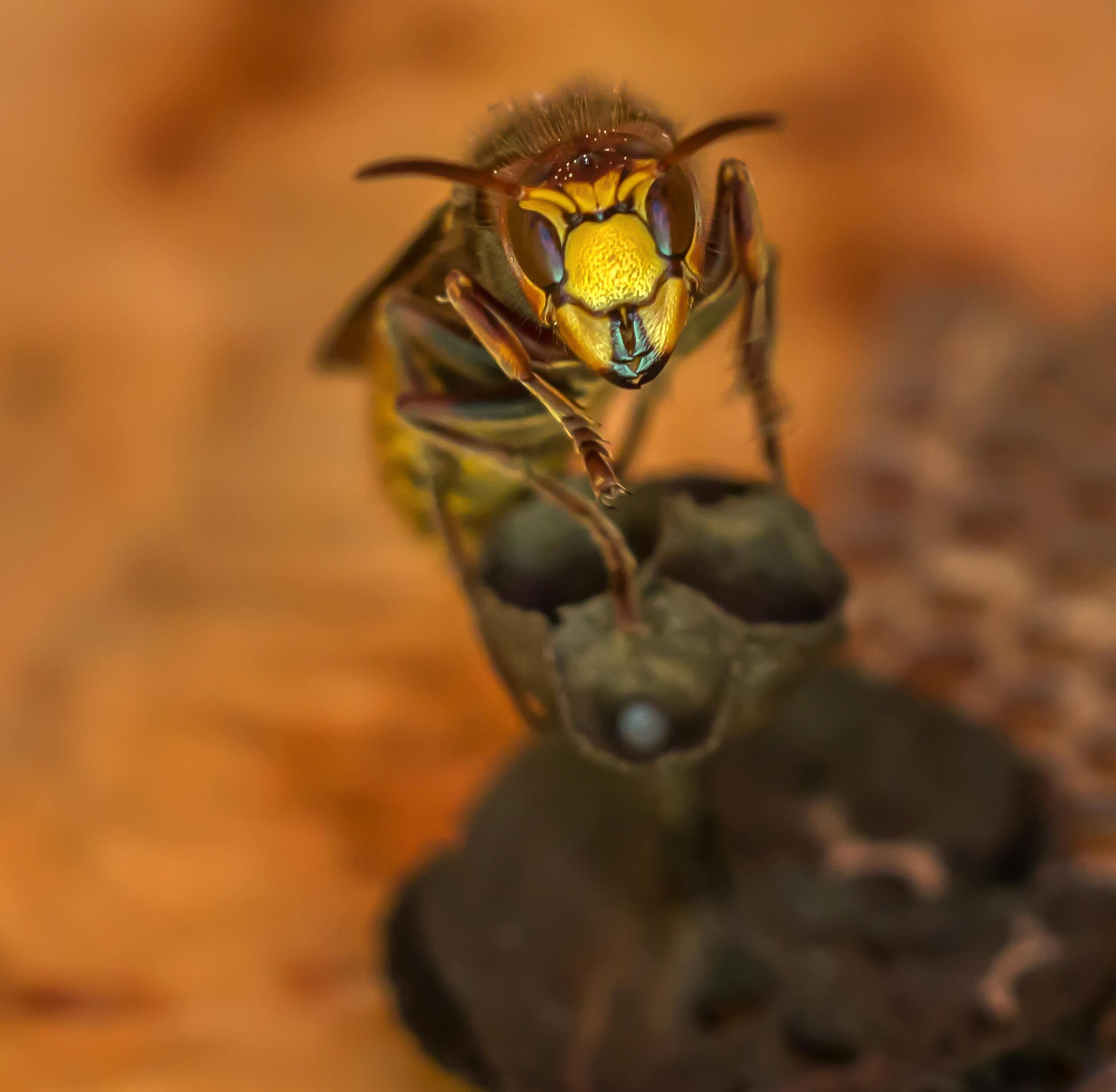Understanding the Hornissennest: Nature’s Intriguing Wasps Abode
What is a Hornissennest?
The term **Hornissennest** refers to the nests built by hornets, which are a type of social wasp. These nests are typically constructed from paper-like material made from chewed wood fibers mixed with saliva. The shape and size of a Hornissennest can vary significantly depending on the species of hornet and its environment. Most nests resemble a large football or an elongated bulb from the outside, often suspended from a tree branch or the eaves of a building. Within the nest, the social structure is fascinating; thousands of hornets can reside, working together to maintain their home and care for their young. Understanding the behavior and structure of a Hornissennest is crucial for both ecological and safety reasons, especially during the warmer months when hornets are more active.

Structure and Material of Hornissennest
The primary material used in crafting a Hornissennest is a *papery substance* derived from chewed wood. The hornets collect wood fibers from various sources—dead trees, fence posts, or even wooden structures and then consume it, mixing it with their saliva. This *paper-like material* is remarkably resilient, providing both insulation and protection from the elements. Nests often contain multiple layers of hexagonal cells where the hornet larvae are reared. This multi-layered structure is not only functional but also reflects the incredible engineering skills of these insects. With a careful examination of a Hornissennest structure, one can observe how hornets adapt their building techniques based on environmental factors.
Location Preferences
Hornets are typically selective about where they build their nests. They prefer locations that provide shelter and are somewhat secluded. Common sites include trees, shrubs, roof overhangs, and even inside wall cavities of buildings. Understanding the ideal conditions for a Hornissennest is essential—hornets seek out environments that are protected from wind and rain, yet accessible for foraging and flight. If you’re observing a hornet nest around your property, it’s critical to assess its location and the potential risks involved, especially if you or anyone nearby has allergies to stings.
Life Cycle of Hornets Inside the Nest
The life cycle of hornets within the Hornissennest is a well-organized process that follows a distinct pattern. The queen hornet emerges in early spring and seeks out a suitable location to build her nest. After creating a small initial structure, she lays eggs that hatch into larvae, which are then fed by the queen. As the season progresses, these worker hornets emerge and take on the responsibility of expanding the nest, foraging for food, and caring for the larvae. By late summer, the nest can host hundreds to thousands of hornets, reaching its peak activity just before the onset of fall. This stage is characterized by increased aggression, as the hornets defend the nest and their young. Understanding this cycle can inform safety measures when interacting with hornet populations.
The Behavioral Traits of Hornets
Hornets are not only fascinating for their architecture but also for their behavioral traits. As social insects, they exhibit a range of complex behaviors, from communication to territorial defense. Their ability to work as a unit within a Hornissennest showcases their intricate social structure, including roles for the queen, workers, and drones.
Communication Methods
Hornets communicate primarily through pheromones and various physical movements. These chemical signals can indicate danger, food sources, or instructions for nest construction. For instance, if a hornet detects a threat, it may release alarm pheromones, prompting nearby hornets to defend the nest. Additionally, visual cues and physical interactions among hornets contribute to their highly organized social structure, facilitating an efficient workflow within the Hornissennest. Observing these communication patterns can provide insights into the overall behavior of hornet societies.
Defensive Strategies
Hornets are known for their aggressive nature, especially when defending their Hornissennest. A single hornet can sting multiple times, delivering a potent venom that can cause significant pain and allergic reactions in some individuals. When an intruder approaches the nest, hornets will often fly in a defensive formation, working together to ward off the threat. This collective response is crucial for the survival of the colony, showcasing the effectiveness of their defense mechanisms. For homeowners, knowing how to safely navigate areas near Hornissennest is essential, especially during the late summer months when hornets are most active.
Feeding Habits and Diet
The diet of hornets primarily consists of protein and sugar-rich substances. Hornets are carnivorous and often hunt other insects to feed their larvae, showcasing their role in the ecosystem as both predators and scavengers. They also seek out sugary foods, such as nectar and fruit, especially in late summer when the colony is at its peak. This diverse diet not only supports their energy needs but also aids in decomposing organic material, thus contributing to ecological balance. Understanding their feeding habits can help manage their presence, especially in gardens or outdoor settings.
Managing Hornissennest Around Your Property
For homeowners, managing Hornissennest can be both a concern and a necessity, especially when these nests appear close to living areas. While hornets play an essential role in the ecosystem, their presence can pose risks, particularly for individuals with allergies or concerns about aggressive behavior.
Signs of Hornissennest Activity
One of the primary signs of hornet activity is the sighting of the insects themselves, especially near potential nesting sites. Look for hornets flying in and out of specific locations where they might build their nest. Other indicators include increased buzzing sounds, especially during warm days when they are most active. Observing these behaviors early can help homeowners decide whether to take preventive measures.
Safe Removal and Relocation Strategies
If a Hornissennest is located in a troublesome area, it’s imperative to approach removal with caution. Professional pest control services are often the safest option, as they can manage the removal with minimal risk. However, if a nest must be handled personally, it’s best to do so during cooler evening hours when hornets are less active. Protective clothing is essential, and using a commercial wasp and hornet spray can assist in safely dismantling the nest from a safe distance. After removal, ensuring that the area is cleaned to eliminate any residual pheromones that may attract future hornets is important.
Preventive Measures
To prevent hornets from establishing nests around your property, consider several proactive measures. Regularly inspect your yard for nesting sites and remove potential sources of food, such as open garbage or fallen fruit. Additionally, sealing cracks and gaps in eaves or wall sidings can minimize nesting opportunities. Installing traps can also be a method of controlling hornet populations during peak season. By taking these preventive actions, homeowners can reduce the likelihood of hornissennest building in their vicinity.
Key Takeaways
- Hornissennest are complex constructions built by social hornets using paper-like material.
- The life cycle and behaviors of hornets are fascinating and involve complex social structures.
- Safe removal and management of hornets require caution and consideration of potential risks.
- Understanding hornet behavior, including communication and defensive strategies, is crucial for managing their presence.
- Preventive measures can significantly reduce the risk of hornissennest development on your property.
FAQ
1. What should I do if I find a Hornissennest near my home?
If you discover a Hornissennest near your home, it’s essential to assess the situation carefully. Determine if it poses a safety risk, especially for children or pets. If necessary, contact a professional pest control service to manage the nest safely. Attempting to remove it yourself can prove dangerous, especially during peak activity seasons.
2. Can hornets be beneficial to gardens?
Yes, hornets can be beneficial to gardens as they help control pest populations by preying on insects such as caterpillars and flies. They also pollinate plants while foraging for food. Understanding their role can help mitigate concerns about their presence in your garden.
3. How can I safely observe a Hornissennest?
To safely observe a Hornissennest, maintain a safe distance and use binoculars for a clearer view. Do not approach the nest, especially during peak activity times, such as late summer. Observing from afar is the best way to appreciate the behaviors of these interesting insects without risking disturbance or stings.
4. Are all hornets dangerous to humans?
While hornets can be aggressive when their nests are threatened, not all species pose the same level of danger to humans. However, they can cause painful stings that may trigger allergic reactions in sensitive individuals. It’s essential to recognize based on the species if they should be considered a significant threat.
5. What time of year do hornets become most active?
Hornets typically become most active in late spring and summer as the queen establishes her colony and the worker population increases. During this time, they are most likely to forage for food and defend their nests, reaching peak activity in late summer before reducing during the fall.
